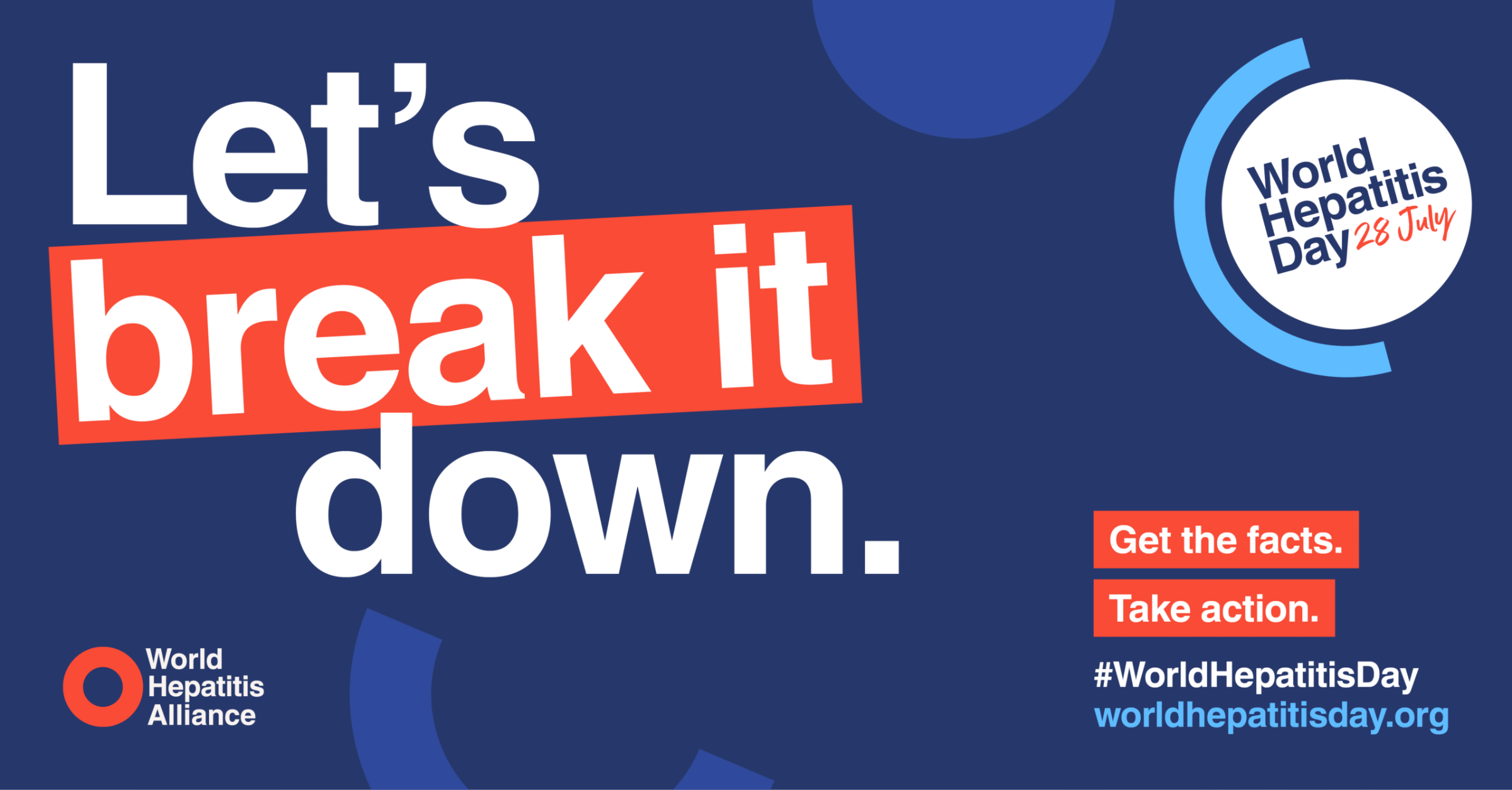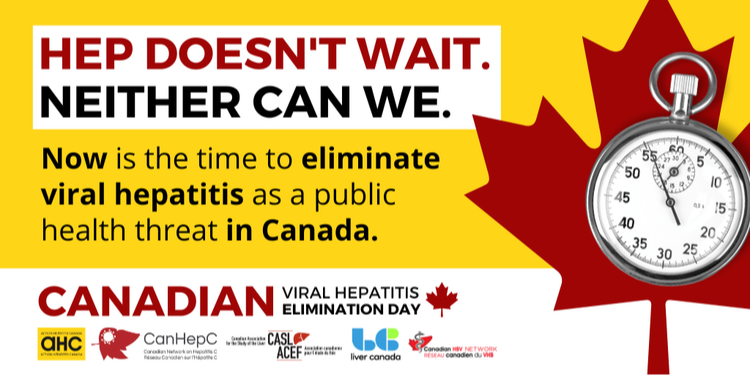
July 28, 2025 – World Hepatitis Day is a time to remember the 1.3 million lives lost annually to chronic viral hepatitis (B & C) and to call for urgent, coordinated, global action to eliminate viral hepatitis as a global public health threat by 2030. This is also a time to raise awareness about viral hepatitis, which causes inflammation of the liver and can lead to severe liver disease and liver cancer.
This year’s theme, “Hepatitis: Let’s break it down,” is a call for action to dismantle the financial, social, and systemic barriers—including stigma—to hepatitis elimination. It’s also a call to break down misunderstandings about viral hepatitis, a preventable and curable disease that is often overlooked.
What is the status of hepatitis C in Canada?
-
According to the most recent national estimates, 214,000 people in Canada were living with chronic hepatitis C and 8200 people acquired hepatitis C at the end of 2021, representing 21 new infections per 100,000 people. (PHAC, 2024).
-
2 in 5 Canadians living with chronic hepatitis C infection were unaware of their diagnosis.
-
Chronic hepatitis C infection causes more years of life lost than any other infectious disease in Canada, with most of the burden of illness coming from liver damage leading to cirrhosis and hepatocellular carcinoma (liver cancer).
-
Direct-acting antiviral treatments for hepatitis C cure more than 95% of people, but they do not protect against re-infection.
-
There is still no vaccine for hepatitis C.
-
7 out of 10 provinces in Canada are on track to meet WHO elimination targets by 2030; 3 provinces are not, including the two most populous provinces in Canada - Ontario and Québec (Action Hepatitis Canada, Progress Toward Viral Hepatitis Elimination in Canada: 2025 Report).
-
Canada is not on track to meet either the 2025 interim target of no more than 13 new hepatitis C infections per 100,000 people or the 2030 target of 5 per 100,000 people; greater efforts are needed to prevent new infections of hepatitis C.
What must be done?
-
The Canadian effort to eliminate hepatitis C must focus on tailoring interventions to populations disproportionately affected by hepatitis C including people who use drugs, Indigenous peoples (First Nation, Inuit, and Métis), people with experience in the prison system, immigrants from countries where hepatitis C is common, and gay, bisexual and other men who have sex with men (gbMSM).
-
Efforts must be grounded in evidence, measurable, and integrated across provincial and territorial health systems.
-
Canada needs to prioritize prevention efforts including supporting evidence-based harm reduction strategies, such as needle and syringe programs, and invest in research to support the development of a hepatitis C vaccine to prevent infections wherever possible, particularly among priority populations.
What is CanHepC doing?
In 2019, CanHepC released the Blueprint to inform hepatitis C elimination efforts in Canada (Blueprint), a policy framework complementing the Pan-Canadian STBBI Framework for Action to guide the development of evidence-based action plans for a public health response to achieve HCV elimination in Canada. The Blueprint lays out WHO elimination-aligned objectives with time-bound and measurable targets across prevention, testing and diagnosis, and care and treatment, as well as priority populations-focused recommendations.
Since 2020, CanHepC has facilitated the Hepatitis C Elimination Roadmap Project to continue to sustain efforts towards HCV elimination following the release of the Blueprint. This project aims to develop regional roadmaps to HCV elimination as well as one national Indigenous Roadmap focused on hepatitis C elimination among Indigenous peoples. The purpose of the Roadmap project is to facilitate a multi-stakeholder consensus-building approach to develop context-specific and tailored recommendations to achieve hepatitis C elimination in different parts of the country. Two Roadmaps have been publicly released to date (Ontario and the Prairies), with more Roadmaps expected to be released later this year.
CanHepC reaffirms its commitment to accelerating the elimination of hepatitis C in Canada and echoes the WHO’s message that elimination is within reach if we act now.









